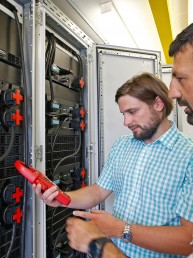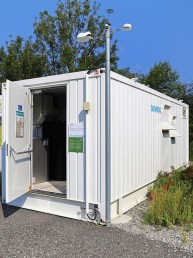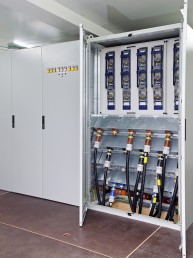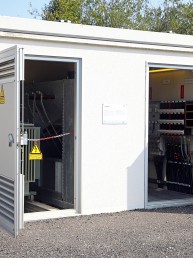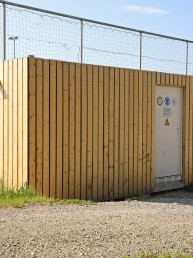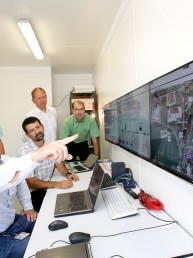The energy campus in Wildpoldsried (ECW) was developed during various research projects the last years – goal is the development and demonstration of smart grids.
The group has previously worked on projects including
IRENE (www.projekt-irene.de) – optimising coordination of generation and consumption using distributed measurement technology and innovative strategies for regulation on DEA, in particular for electric vehicles.
They also collaborated on
IREN2 (www.iren2.de) – combining grid network operation guidance and the market, proving the feasibility of microgrids as individual networks, proving the feasibility of microgrids at topological power plants.
Both these projects were successful.
BATTERY STORAGE
In periods of high regenerative electricity generation the stationary battery storage, with the latest lithium-ion technology, can buffer electric energy and supply it back into the grid later.
This performance is essential, especially in non-interconnected island grids in order to establish the equilibrium between consumption and generation of electric power and hence to ensure a stable operation of the grid at any time.
Rated Power: 240 kVA (300 kVA peak power)
Energy: 160 kWh
NANOGRID
The nanogrid with a controllable photovoltaic system, two home battery storage units, air-to-air heat pump and controll-
able loads simulates a prosumer at household level.
This will allow to investigate the contribution of such nano grids to the security of supply and how they can provide themselves temporarily in case of failure.
HARDWARE CONTAINER
The hardware container consists of a complex switchgear, two battery storage systems (campus and home storage) and a reactive power compensation system.
The switchgear is used to connect all energy systems at the energy campus. In addition flexible cable lengths of up to one kilometer can be switched between the equipment. Thus real low-voltage grids can be practically examined.
The campus storage serves as an independent energy storage system at grid level (Capacity: 75 kWh). The home store can compensate the fluctuations between generation and
consumption (Capacity: 10 kWh).
The reactive power compensation system regulates the voltage
between the components. Power: 100 kvar
TRANSFORMER STATION
In the transformer station 20.000 volt medium voltage are transformed to low voltage, supplying households with power. Large renewable generation units are connected to the station and the power is fed back to the grid via the transformer.
In the station pebbles components of the energy campus such as the battery storage are connected with the power grid.
GENERATOR
The generator consists of a conventional combustion engine, which is directly coupled to a synchronous generator. This generating unit is still widely used as an emergency generator for example.
At the energy campus the interaction of renewable and
conventional generation plants will be examined. This serves to reduce the use of conventional aggregates to a minimum.
Rated power: 100 kVA
CONTROL CENTER
The Control Center includes a local control station for the implementation and monitoring of experiments and demonstrations on the energy campus.
The control station helps to control the individual assets in a targeted manner and offers the possibility to show current and historical measured values graphically. In addition superimposed control structures (such as secondary control) could be configured and activated.
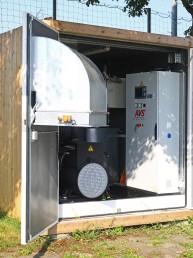
VEGETABLE OIL UNIT
In an island grid the electricity supply always has to be ensured – also in times of low regenerative power generation.
Regenerative electricity generation from sustainable energy sources are – as well as wind and sun – an important contribution for the energy revolution.
Thus a diesel generator running on vegetable oil will be used additionally. The use of this generator can be scheduled because its availability is weather independent.
Rated Power: 90 kVA

